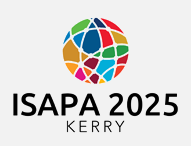Start Date
17-6-2025 12:30 PM
End Date
17-6-2025 2:00 PM
Abstract
Purpose
The purpose of this study was to examine the subjective experiences of students with disabilities and amplify their voices related to feelings of inclusion and belonging in integrated physical education (PE).
Methodology
Six students (5 male and 1 female), 13-17 years of age, with an IEP and receiving PE in an integrated setting were recruited from a local middle school. Students who were recruited were asked to draw “normal” and “ideal” days of PE. Next, students were interviewed to further understand and inquire about the drawings’ contents and feelings towards PE. Interviews were then transcribed. Interview transcriptions were coded along with analysis of student drawings to find emerging themes on student perceptions of integrated PE.
Results
Results from participants highlighted four recurring themes: (a) enjoyment in PE, (b) special support, (c) positive elements of PE, and (d) negative feelings in PE. There was a common theme of positive feeling regarding PE days, however there were some negative feelings and want for increased inclusivity in integrated PE.
Conclusion
Students enjoy integrated PE and view it as fun and enjoyable. However, some negative emotions arise when feeling unincluded by able bodied peers. Students identify that they would prefer to continue normal activities while increasing inclusion to create an “ideal” integrated PE class.
Recommended Citation
McKay, Cathy and Damewood, Maria, "Amplifying the Voices of Students with Disabilities in Integrated Physical Education" (2025). International Symposium of Adapted Physical Activity and International Symposium on Physical Activity and Visual Impairment and Deafblindness. 30.
https://sword.mtu.ie/isapa/2025/day2/30
Amplifying the Voices of Students with Disabilities in Integrated Physical Education
Purpose
The purpose of this study was to examine the subjective experiences of students with disabilities and amplify their voices related to feelings of inclusion and belonging in integrated physical education (PE).
Methodology
Six students (5 male and 1 female), 13-17 years of age, with an IEP and receiving PE in an integrated setting were recruited from a local middle school. Students who were recruited were asked to draw “normal” and “ideal” days of PE. Next, students were interviewed to further understand and inquire about the drawings’ contents and feelings towards PE. Interviews were then transcribed. Interview transcriptions were coded along with analysis of student drawings to find emerging themes on student perceptions of integrated PE.
Results
Results from participants highlighted four recurring themes: (a) enjoyment in PE, (b) special support, (c) positive elements of PE, and (d) negative feelings in PE. There was a common theme of positive feeling regarding PE days, however there were some negative feelings and want for increased inclusivity in integrated PE.
Conclusion
Students enjoy integrated PE and view it as fun and enjoyable. However, some negative emotions arise when feeling unincluded by able bodied peers. Students identify that they would prefer to continue normal activities while increasing inclusion to create an “ideal” integrated PE class.

